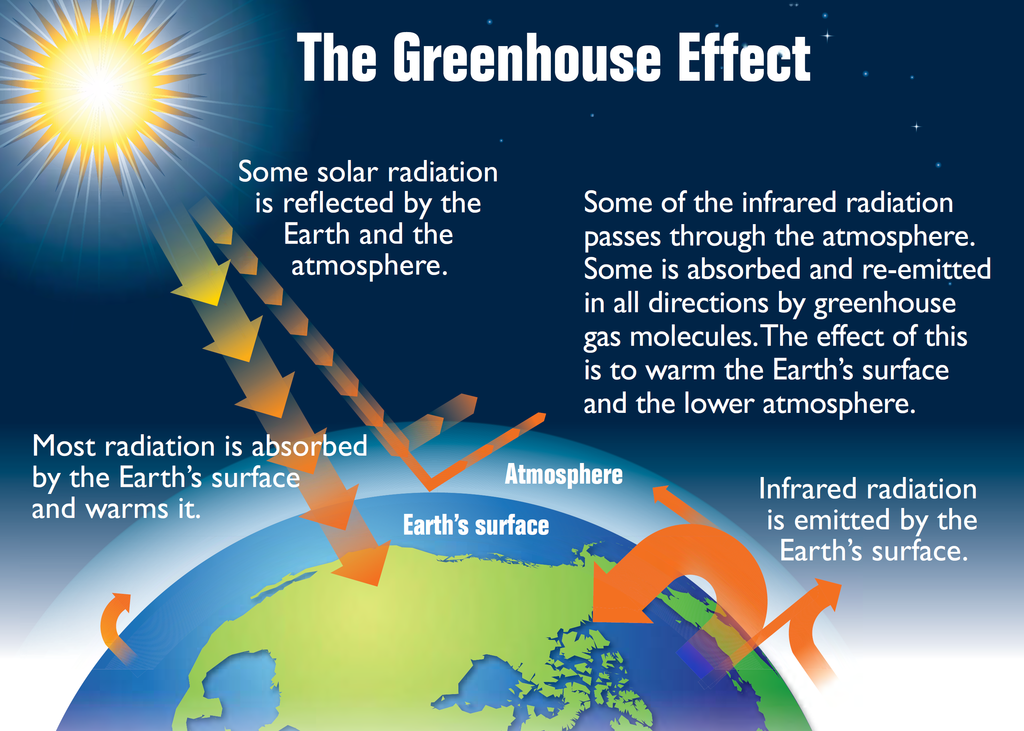A warming of Earth’s surface and troposphere (the lowest layer of the atmosphere) caused by the presence of water vapor, carbon dioxide, methane, and certain other gases in the air. These gases, also known as greenhouse gases, water vapors have the largest effect.
How it Works?
The atmosphere allows most of the visible light from the Sun to pass through and reach the Earth’s surface. As Earth’s surface is heated by sunlight, it radiates part of this energy back toward space as infrared radiation. This radiation, unlike visible light, tends to be absorbed by the greenhouse gases in the atmosphere, raising its temperature. The heated atmosphere, in turn, radiates infrared radiation back toward Earth’s surface. (Despite its name, the greenhouse effect is different from the warming in a greenhouse, where panes of glass transmit visible sunlight but hold heat inside the building by trapping warmed air.)

Causes
The greenhouse effect is caused by the atmospheric accumulation of gases such as carbon dioxide and methane, which contain some of the heat emitted from Earth’s surface.
Without the heating caused by the greenhouse effect, Earth’s average surface temperature would be only about −18 °C (0 °F). On Venus, the very high concentration of carbon dioxide in the atmosphere causes an extreme greenhouse effect resulting in surface temperatures as high as 450 °C (840 °F).
Although the greenhouse effect is a naturally occurring phenomenon, it is possible that the effect could be intensified by the emission of greenhouse gases into the atmosphere as the result of human activity. From the beginning of the Industrial Revolution through the end of the 20th century, the amount of carbon dioxide in the atmosphere increased by roughly 30 percent and the amount of methane more than doubled. A number of scientists have predicted that human-related increases in atmospheric carbon dioxide and other greenhouse gases could lead by the end of the 21st century to an increase in the global average temperature of 0.3 to 4.8 °C (0.5 to 8.6 °F) relative to the 1986–2005 average. This global warming could alter Earth’s climates and thereby produce new patterns and extremes of drought and rainfall and possibly disrupt food production in certain regions.

Greenhouse Gases
Greenhouse gas, any gas that has the property of absorbing infrared radiation (net heat energy) emitted from Earth’s surface and reradiating it back to Earth’s surface, thus contributing to the greenhouse effect.
They are as follow:
- Carbon dioxide
- Methane
- Watervapor
- Surface-level ozone,
- Nitrous oxides,
- Fluorinated gases